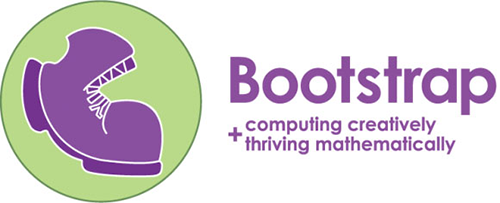 PROVIDENCE, R.I. [Brown University] — The White House announced today a major nationwide effort to bring computer science education to all students across the country, noting that computer science skills are considered “a new basic skill necessary for economic opportunity and social mobility.” A computer science curriculum developed in part by faculty at Worcester Polytechnic Institute (WPI) and Brown University will play a role in this effort.
PROVIDENCE, R.I. [Brown University] — The White House announced today a major nationwide effort to bring computer science education to all students across the country, noting that computer science skills are considered “a new basic skill necessary for economic opportunity and social mobility.” A computer science curriculum developed in part by faculty at Worcester Polytechnic Institute (WPI) and Brown University will play a role in this effort.
Bootstrap is a middle- and high-school curriculum in which students learn key concepts in computer programming and algebra in the process of creating their own video games. In support of the White House initiative, Bootstrap will partner with two other computer science education programs, Exploring Computer Science and CS Principles, to prepare an additional 300 middle- and high-school educators to use Bootstrap and other computer science curricula.
This July, the three organizations will sponsor CSPdWeek, a professional development workshop to be held in Colorado, where teachers will be trained to use curriculum modules developed by all three organizations. The organizers hope the intensive five-day workshop — the first of its kind — could ultimately help bring high-quality computer science education to as many as 10,000 students annually nationwide. The event will be held in conjunction with TeachCS, which provides funding support for teachers to attend professional development programs around the country.
“Bootstrap is committed to providing evidence-based CS curricula to teachers across the United States, with the goal of empowering all students,” said Emmanual Schanzer, Bootstrap’s co-director. “For us, CSPdWeek is a chance to continue this mission and to work hand-in-hand with other great curriculum providers in the community.”
Bootstrap and its forebears began nearly 20 years ago, and the curriculum is now used in hundreds of schools across the country. Curriculum provider Code.org recently began offering a curriculum based on Bootstrap nationally. Computer literacy advocate CSNYC is bringing Bootstrap to schools throughout New York City. (Read more about how Bootstrap works in the classroom and learn more about current research)
“Bootstrap harnesses kids’ love of video games and uses it to teach not only critical computer coding skills, but key concepts in algebra as well,” said Shriram Krishnamurthi, professor of computer science at Brown and a Bootstrap co-director. “The skills that students learn are surprisingly sophisticated — not only basic programming but also event-driven programming, testing, participating in code reviews, and more. These are usually thought of as skills acquired in the workplace, but we’re teaching them to middle and high schoolers.”
Implementing computer science courses in the schools poses a significant challenge. Few middle schools and high schools have computer science teachers on staff, and few states offer teacher certification in the area. School districts often must compete with higher-paying private sector employers in recruiting computer science professionals.
Because the Bootstrap pedagogy is familiar to math teachers — it uses a step-by-step approach to solving word problems, albeit in the context of programming a simple video game — it’s “a gentle introduction to computing for math teachers, who already exist in every school,” said WPI computer science professor Kathi Fisler, a Bootstrap co-director. “The Bootstrap curriculum starts with a training module that is appropriate for math teachers who have no prior computing background and eases them into computing at their own pace, while leveraging their deep experience as teachers.”